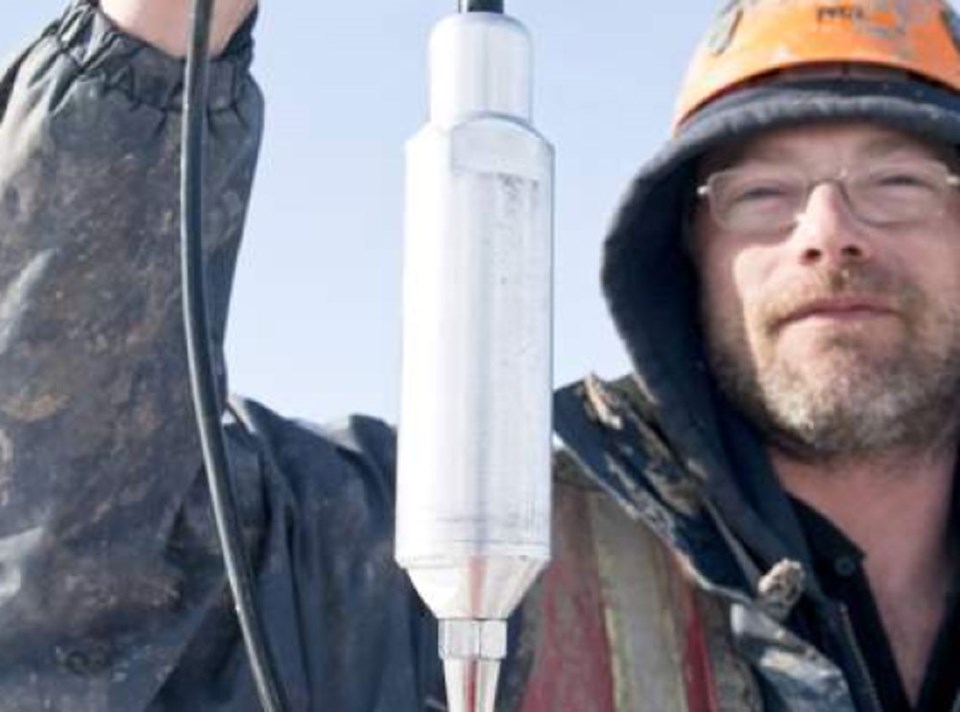Another piece of the carbon capture puzzle is coming together, as the team behind the Aquistore project prepares for the first round of carbon dioxide injection.
The Petroleum Technology Research Centre (PTRC), which partners with SaskPower on the Aquistore research project, is expecting to begin injecting liquefied carbon dioxide captured from Boundary Dam Power Station’s refurbished Unit 3 generator in December.
Kyle Worth, the PTRC’s project manager for Aquistore, told the Mercury on Monday that as the Aquistore team awaits the first contribution of carbon dioxide, there is a group on site actively commissioning the instrumentation. The instrumentation has been ready to accept CO2, but now they have to activate all of the equipment.
“Before the end of this year, we’re expecting to commission the wells and all of the monitoring in order to start injecting CO2 by the end of this year,” said Worth.
“There’s some equipment that has been measuring for the past two years, but for the down pool and reservoir information, it needs to be commissioned and be ready in place for when CO2 injections begin.”
With an injection well drilled 3.4 km below the surface, the carbon dioxide will be injected into a porous layer of sandstone, and the liquid will fill in the pores. A layer of hard rock above the sandstone will act as the lid to keep the liquid from rising back up to the surface and entering into groundwater.
The PTRC has been involved in carbon dioxide injections in the Weyburn area where Cenovus is using CO2 for enhanced oil recovery, so the group is familiar with injecting the liquid into the ground. Much of the technology at Aquistore isn’t new, though long-term storage is.
“Obviously at Weyburn, we’ve been involved in their CO2 injection program for over 10 years, and there’s a good understanding of how reservoirs work with the fluids you inject into them,” said Worth.
With this project, the PTRC expects to demonstrate there is less risk with long-term storage than there is injecting CO2 into the ground for oil recovery. In an oilfield, carbon dioxide is injected, brought to the surface to extract oil and is then re-injected into the field.
“We’re injecting it to stay down there. The theory behind it is slightly different but the technology in which you measure it and monitor it by are all from our best practises in Weyburn,” noted the project manager.
There is still some new tech involved in the Aquistore project, however. The PTRC is experimenting with some new technologies in order to advance the monitoring of the CO2.
“That’s what makes Aquistore unique. We have some new instruments on the surface and sub-surface and, as well, attached to the wells to more accurately predict the flow of the CO2 and monitoring of the CO2.
“To date, we’ll have collected a comprehensive baseline monitoring set of data, so you want to collect all of your data prior to injection to demonstrate that there is no changes to anything at the surface or at the near sub-surface,” said Worth.
The PTRC will be hosting an open house sometime this fall prior to the project’s first injection, and Worth said that will show the preliminary baseline monitoring prior to injection. A date for that open house has yet to be selected, and there is a second open house planned for some time after data have been collected following the carbon dioxide injections. Worth said that one may be expected some time in spring 2015.
That second open house will publicize information gathered form the first seven to eight weeks of injection.
Cenovus Energy is the primary beneficiary of captured CO2 from the carbon capture project, but what they don’t want or need will go to Aquistore. The capture unit at Boundary Dam is capable of capturing about 3,200 tonnes of CO2 each day. The injection well at Aquistore can take up to 2,000 tonnes of that product daily if necessary. Worth said that 2,000-tonne cap is a limitation of the well, not the reservoir.
The Aquistore project is scheduled to run until 2017, and Worth said that end date would give the PTRC an adequate amount of time to demonstrate the monitoring of the CO2.
“What could be considered following that is the long-term impact. Since there are very few projects like this in the world that are active, besides Weyburn and Aquistore and a handful of others, there’s not a lot of long-term data that’s associated. If more information is available in relation to abandonment and closure and those types of things, it may be considered worthwhile to continue on a project,” said Worth, though there aren’t any plans at the moment to extend the project.
“At this stage that we’re at, we’re just trying to demonstrate that we have an adequate handle on the monitoring perspective of the project.
“Early predictions would be that generally we understand the impacts of the CO2 and that it’s going to remain secure within our reservoir complex,” said Worth. He said they expect the information they collect will verify their predictions that the project provides a safe environment to store CO2 after it has been captured from Boundary Dam’s coal-based power generator.




